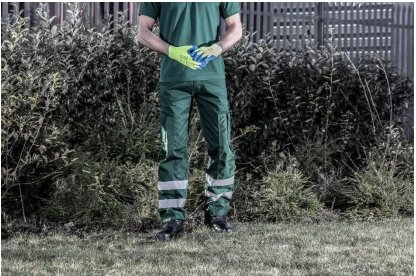A range of work clothes designed to increase an individual’s safety is called safety work wear. It’s a well-known reality that there are risks in the workplace that may not always be obvious at first glance but are there nonetheless. It is a habit that all workers should develop to wear safety gear. Hand-operated machinery is a common sight in industries, putting you in close proximity to numerous potential hazards. How do you maintain hygiene and security? Put on
the proper protective gear. Work wear that is specifically designed to ensure the safety and protection of employees is an essential resource in numerous sectors. The significance of safety work wear, which is intended to protect employees from a variety of dangers including electrical, chemical, mechanical, and biological risks, cannot be emphasized.
Workers may be exposed to a variety of health and safety hazards when handling dangerous chemicals, oils, and grease. These compounds may irritate the skin, burn chemically, and occasionally result in long-term health issues. They may also contribute to the spread of hazardous gasses and present a fire hazard.
It is your duty as an employer to make sure that your staff members are safe and healthy. You can lessen the possibility that employees will come into contact with dangerous materials and keep them safe by mandating that they wear protective gear.
The fact that safety clothing reduces the risk of accidents and injuries at work may be its most evident advantage. This is so that employees can be shielded from a variety of injuries that may arise in a variety of sectors by wearing safety gear.
For instance, workers are vulnerable to burns, abrasions, punctures, and injuries from machinery, equipment, and sharp items in industrial facilities and construction sites.
Ensuring workplace safety requires strict adherence to safety rules. In order to lower the risk of workplace accidents and injuries, the Health and Safety Executive (HSE), a UK government organization in charge of enforcing workplace safety laws, stresses the significance of providing the proper safety equipment, including work wear. Personal protection equipment, such as safety clothing, can lower the risk of workplace injuries by up to 90%, according to an HSE report.
Any business should put its employees’ safety and wellbeing first. Companies that put a high priority on workplace safety not only shield their workers from damage but also benefit from improved brand recognition and image. Businesses that put safety first can develop a reputation as a trustworthy, compassionate company that values its workers, which can be a big draw for clients and future hires.
Ballistic pants are made to shield wearers from projectile hazards like shrapnel, hence reducing risk of harm. High-strength materials, such Kevlar, an aramid fiber type renowned for its remarkable strength and durability, are used to make these pants. The ballistic pants’ fabric will stretch and distort to absorb the energy of an impact caused by a sharp object. Through this procedure, the wearer’s risk of damage is decreased by helping to distribute the impact’s force.

High-visibility, or hi-vis, apparel is made to make the wearer more visible in low-light or busy areas, helping to prevent injuries. Bright colors like neon green, orange, or yellow that are noticeable even from a distance are characteristic qualities of hi-vis apparel.

Work wear boots and other safety footwear are made to prevent electrical and slip hazards, as well as to protect the feet and toes from collisions, crushing, and piercing injuries. The materials used to make these boots are usually steel, composite materials, or leather, all of which provide different degrees of protection against various types of dangers.

Employers should do a risk assessment to identify what personal protection equipment (PPE) should be given to workers and whether specific protective clothes should be provided, as some workplaces pose more risks than others.
It is crucial for workers who handle dangerous chemicals, oils, and grease on a regular basis to wear the appropriate protective gear. It is your duty as an employer to guarantee the safety of your staff by mandating the usage of protective gear. By doing this, you may lower the risk of injury, increase productivity, uphold adherence to health and safety laws, and improve the reputation of your company.
Being dressed in your code of uniform expresses your professionalism, discipline and distinction. At Almaarif Uniforms, we ensure your professional preparedness by providing customized uniforms, enabling you to present yourself distinctively.
Privacy Policy
© 2021 Al Maarif